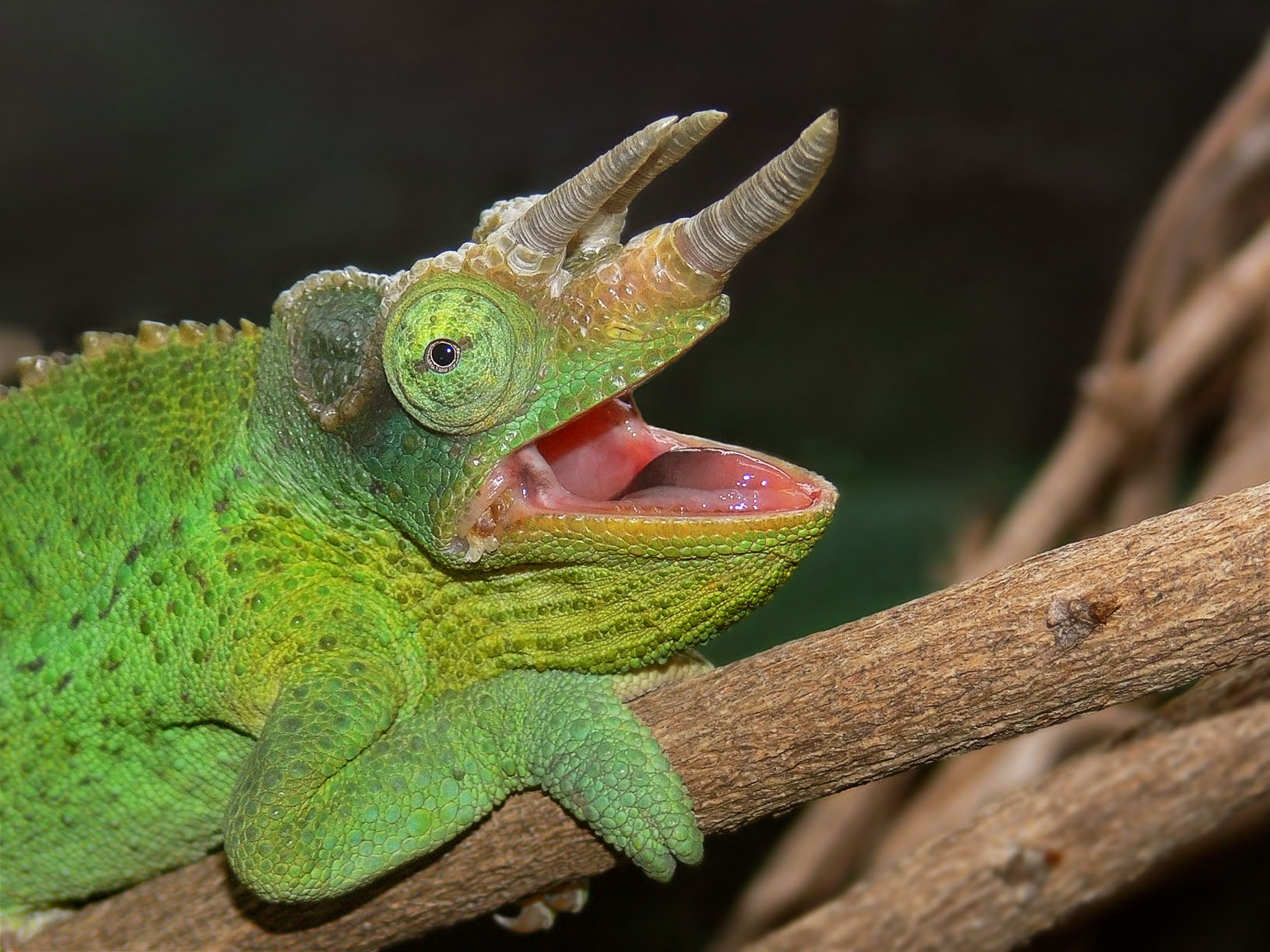Many chameleons have horns or other rostral appendages. But who has the most? The regular one is the four-horned chameleon, Trioceros quadricornis. It occurs in Cameroon and Nigeria. The males of this species in particular usually have four real horns on their nose. The subspecies Trioceros quadricornis gracilior can even occasionally have up to six horns – but this horn record is not common. Incidentally, even the females of this species can be horned – this is not the case with many other species.
Incidentally, a distinction is made between true horns and false horns in chameleons. Chameleons with true horns have a bony process on their nose that is covered by a thin layer of keratin. This keratin layer develops from a single scale. These true horns are mainly found in the genus Trioceros. In contrast, false horns also have a bony base, but are covered with normal, scaly skin. False horns are found in many Malagasy chameleons. Finally, there are dermal horns, which consist only of skin. They are soft, flexible and have no bone underneath. These horns are also mainly found in Malagasy chameleons.
#show your colours #internationalchameleonday #chameleonday #chameleondayMay9 #agchamaeleons
Photo: Jackson’s chameleon, Trioceros jacksonii, also has real horns; Creative Commons Attribution-Share Alike 3.0 Unported, fotografiert von Benjamint444



